The opening date of the IMA’s 100 Acres: The Virginia B. Fairbanks Art & Nature Park is less than a year away, and work is picking up at an increasing pace. 100 Acres will be one of the largest museum art parks in the country, and the only one to feature the ongoing commission of site-specific artworks. Around here it’s become commonplace to interact with one of the eight artists making an inaugural installation on site or in a 100 Acres meeting. Construction and planning is well underway on all of the projects.
Being responsible for the preservation of these new installations continues to precipitate developments in our long-term approach. For the past five years, I’ve been helping to care for the more than 50 outdoor sculptures on and around the IMA campus, but the installations within 100 Acres will require a slightly different kind of understanding of preservation.
For example, the IMA’s iconic 1970 LOVE sculpture has been installed on the grounds in at least 4 different locations, and at least 3 other locations elsewhere before it was acquired by the IMA in 1975. Unlike LOVE, the 100 Acres works will be intrinsically tied to their locations.
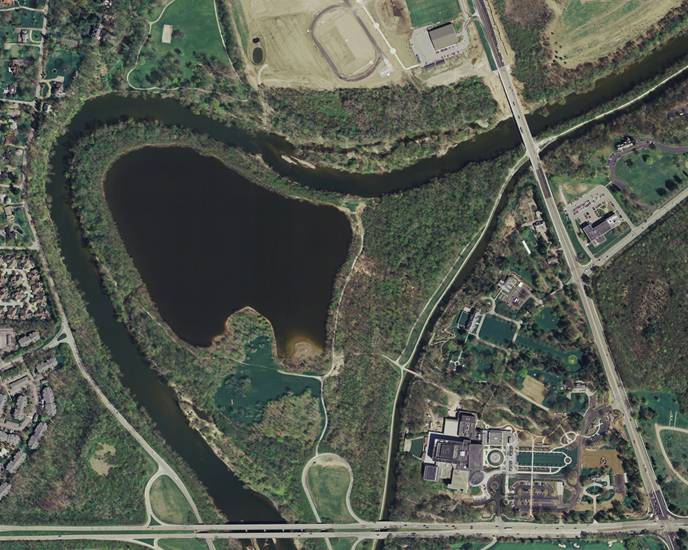
Aerial view of the IMA campus with the museum building and Lilly House and gardens to the right and 100 Acres to the left.
Once 100 Acres is open, the IMA will continue to commission new site-specific, endemic, large-scale installations and artworks for the untamed woodlands, wetlands, meadows and 35-acre lake of this museum art park. As far as I know, a project of this scale is unprecedented. When I thought about art conservators with experience working with site-specific outdoor installations, the first one that came to mind is my friend Francesca Esmay, the conservator at the Dia Art Foundation. While it remains to be seen if any of the 100 Acres installations will become as iconic as Walter De Maria’s The Lightning Field or Robert Smithson’s Spiral Jetty, I was very interested to understand her approach to managing the preservation of “art that extends beyond the traditional exhibition framework.”
I asked Francesca about the maintenance and conservation documentation of the Dia collection, in particular for Robert Smithson’s Spiral Jetty.
Francesca Esmay: There are a lot of facets to the preservation effort at Spiral Jetty, so I will try to talk through all of the different approaches that Dia is taking. I guess two main things to point out right from the start is that (1) the piece entered Dia’s collection in 1999, so for most of its life it has not been under the purview of Dia; and (2) it was substantially submerged for almost 30 years! It emerged in 2002 and has been almost consistently visible since then, at times with water levels so low that there is exposed lake bed for hundreds of feet around the sculpture, really with no water in sight.
Obviously this change in water levels has impacted the physical materials of the Jetty. It becomes intermittently encrusted with salt crystals each time it emerges from the Great Salt Lake, dramatically coloring the basalt rock white until the salt wears away and the rocks return to their black color. Along with this more transient shift in color, the change in water levels have created areas of erosion, simultaneous with areas of new deposits of silt and sand from the lake.
Since we at Dia are still gathering information around the history of the piece, I cannot say what, if anything, was done to it in terms of prior physical interventions or “restorations” during the years before it came into the collection. If anything had been done it would have been in the early 70s, since it became consistently submerged not long after it was finished in 1970.
As far as routine maintenance for the sculpture, I check the water level online from time to time, to make sure the sculpture is still visible! And to a certain extent, we attempt to roughly gauge the number of visitors to the site, although we don’t keep hard data on that and rely instead on estimates from the park officials at the Golden Spike National Historic Site. We have contacts who live in Salt Lake City who regularly visit and report on anything noteworthy, and we typically have someone from the staff and/or colleagues visiting the site providing reports as well. I have managed to see the piece once per year since joining Dia in 2006 and plan to maintain that schedule so there is a formalized, regular documentation of the sculpture and its changes.
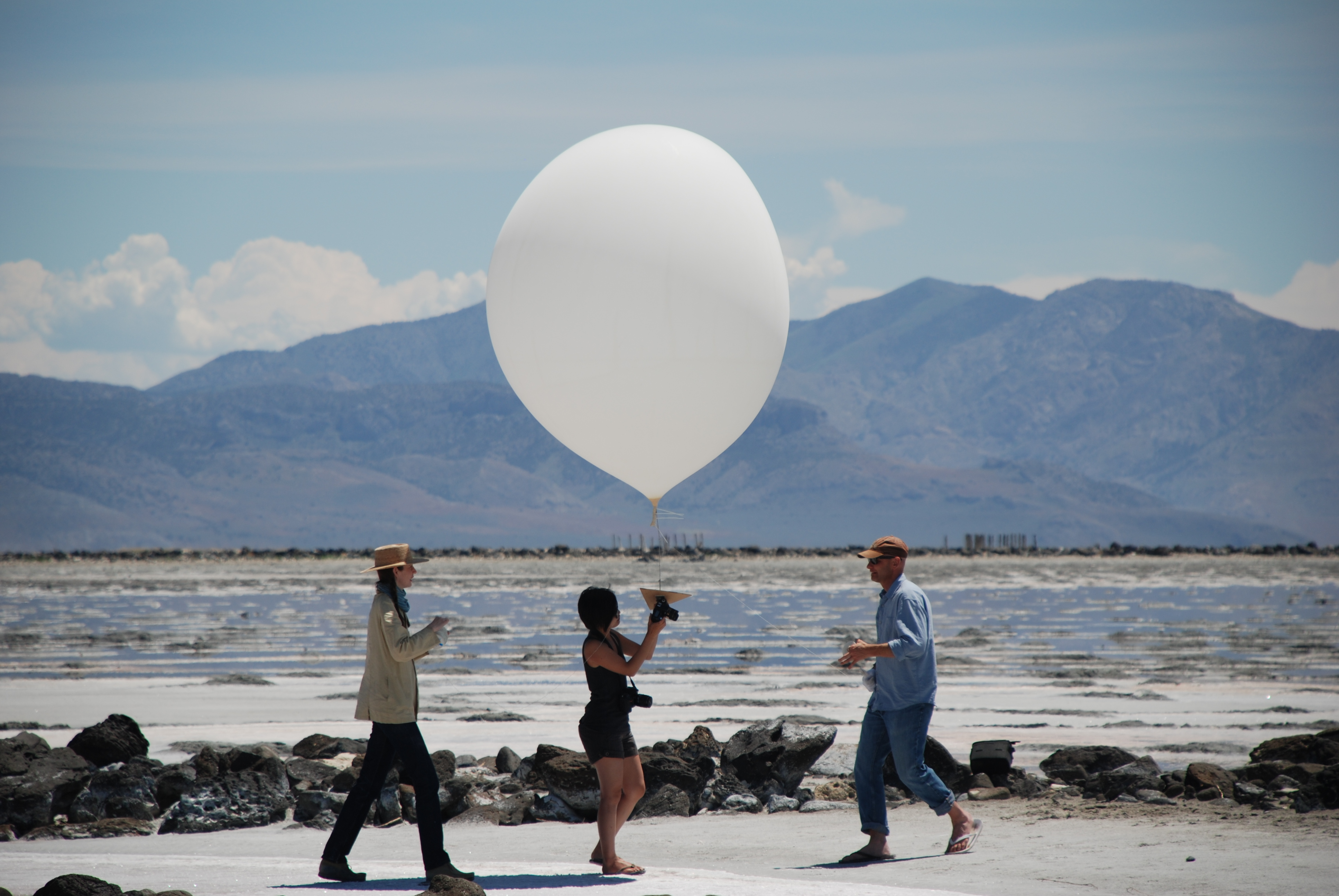
Francesca Esmay, Aurora Tang, and Rand Eppich prepare to launch a tethered helium balloon with digital camera attached. Robert Smithson, "Spiral Jetty," 1970. Long-term installation in Rozel Point, Box Elder County, Utah. Photo: Katie Stone Sonnenborn. Collection Dia Art Foundation.
Specifically in regard to that effort, I recently collaborated with the Getty Conservation Institute (GCI) to explore ways to document the piece in a more systematic way. I worked with Rand Eppich, senior project manager in the Field Projects Group at the GCI, who deals with photography and documentation for the projects they work on — many of which are archaeological sites. He and I spoke about the idea of using those methods to document Spiral Jetty and we met there in May of this year to launch a collaboration.
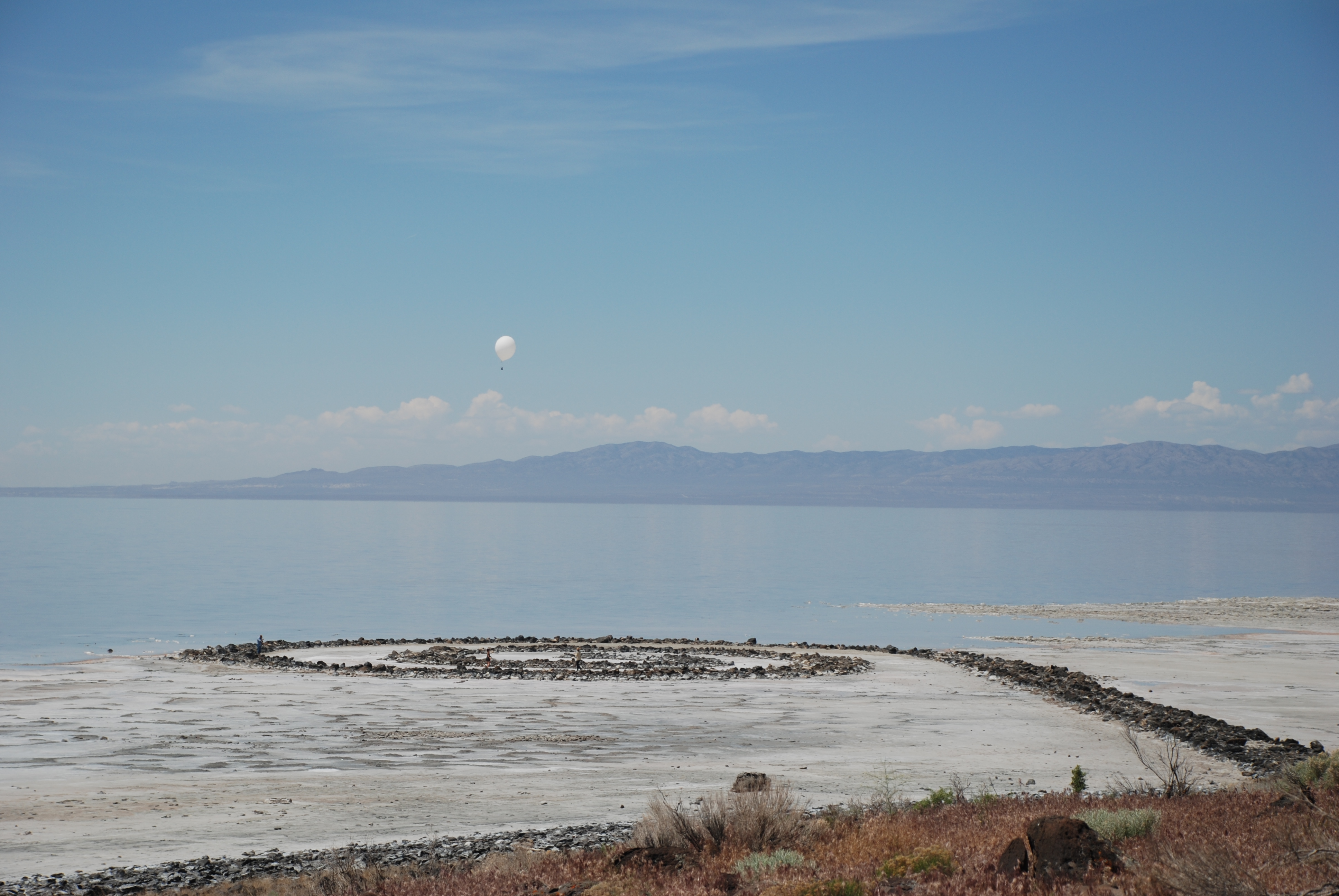
View of "Spiral Jetty" with tethered balloon and camera. Robert Smithson, "Spiral Jetty," 1970. Long-term installation in Rozel Point, Box Elder County, Utah. Photo: Katie Stone Sonnenborn. Collection Dia Art Foundation.
To photo-document Spiral Jetty, we used a tethered helium balloon about 8-10 feet in diameter, attached to a digital camera that would take an image every few seconds until the camera’s memory card filled up. Each of us let out string from a spool and sent the balloon up anywhere from 50 to 600 meters, depending on what we were trying to capture and other factors such as wind and amount of helium to give lift. The results were absolutely amazing! Now I have a low tech, low cost way to take aerial images of the sculpture — something I plan to do on an annual basis. These images can be paired with data that we collected using a Total Station survey instrument in order to create scaled 3D maps and diagrams of the Jetty and its materials.
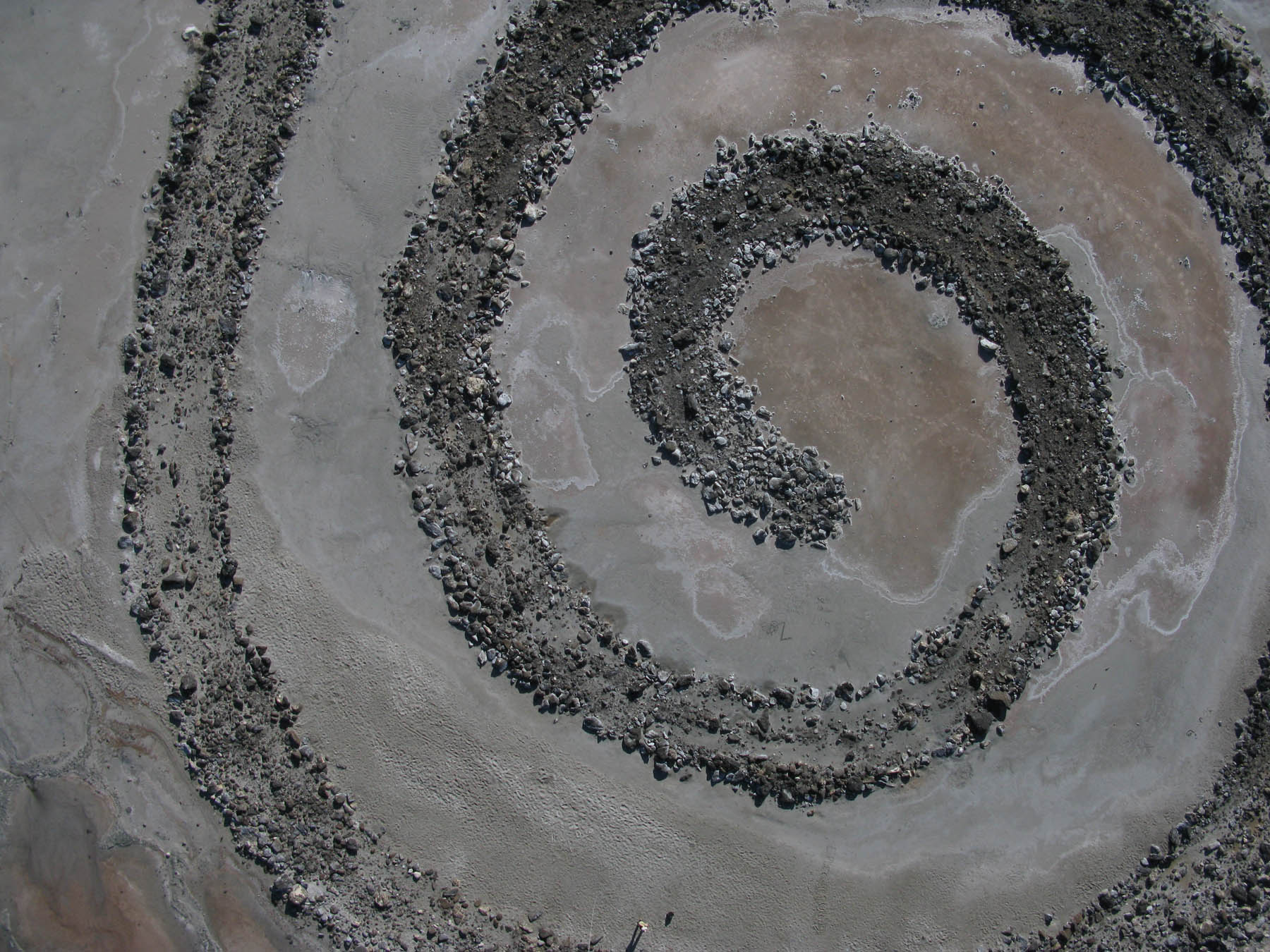
Detail of Robert Smithson, "Spiral Jetty," 1970. Long-term installation in Rozel Point, Box Elder County, Utah. Photo: Eppich/Esmay/Tang, J. Paul Getty Trust. Collection Dia Art Foundation.
I see this as the only way I can begin to build a framework for thinking about the larger issues and questions surrounding preservation of the piece into the future. Change is such an inherent element in Spiral Jetty. If you look at images that have been taken over the years, at times it is hard to understand that the materials and site could look so dramatically different, depending on water level, the presence of salt crystals or red brine shrimp in the water, weather patterns, and even erosion and deposition. For example, currently there is a large area of silt deposits in the north west quadrant of the spiral (though this is a bit hard to see in the aerial, this is visible in the above image in the lower left corner). Personally, I see that as something that is foreign to the piece, but maybe it will be gone in a few years time? Maybe it will advance and further clog the bands of the Jetty? Maybe the drought will persist and worsen so that water isn’t an element seen at the Jetty at all? Maybe Spiral Jetty will become submerged again?
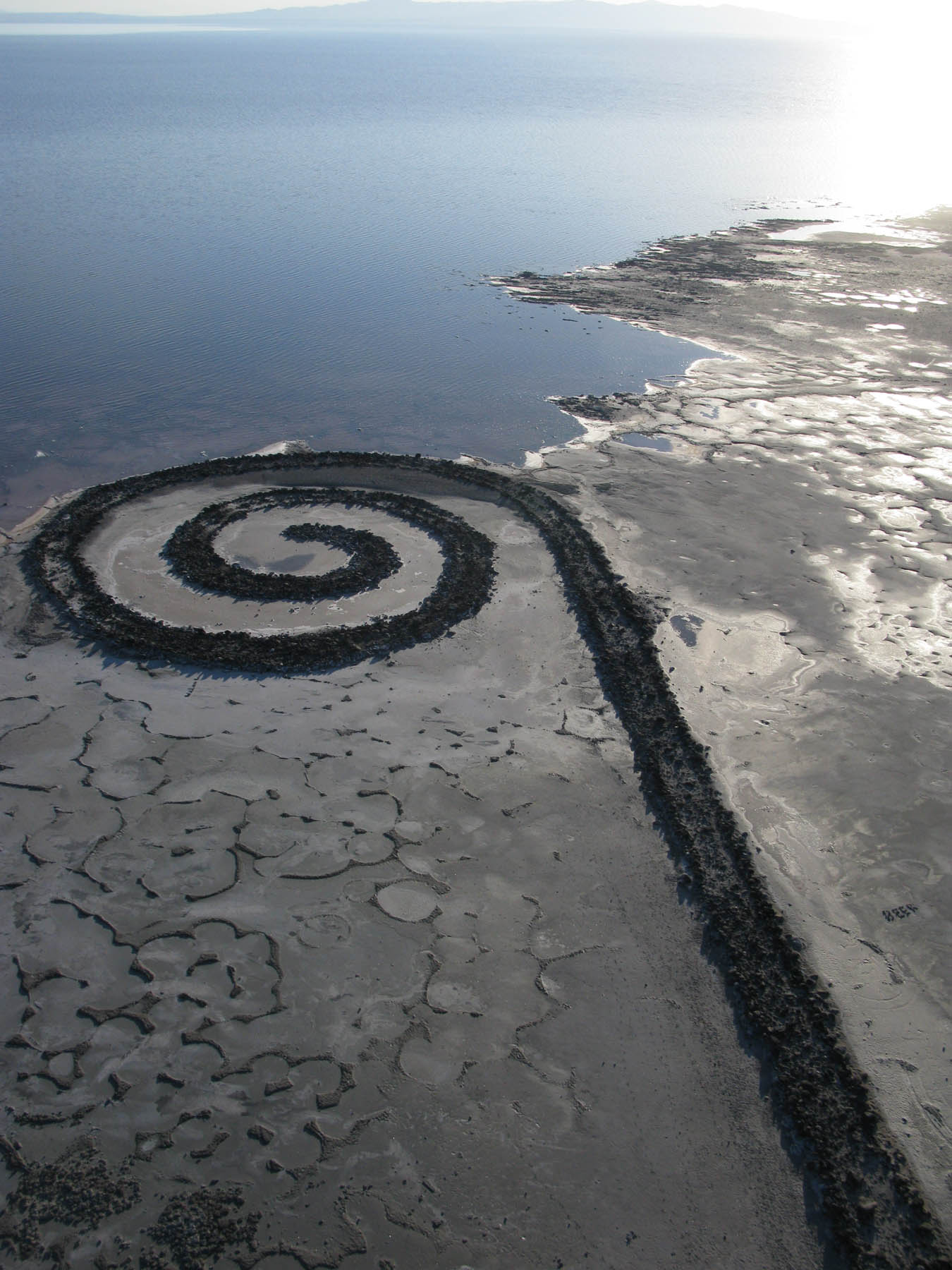
Robert Smithson, "Spiral Jetty," 1970. Long-term installation in Rozel Point, Box Elder County, Utah. Photo: Eppich/Esmay/Tang, J. Paul Getty Trust. Collection Dia Art Foundation.
RM: How do you shape the visitor’s experience and use of the site? FE: As you saw on Dia’s website, we provide driving directions for people to get to the site, but do not specify anything further. Yes, there is an admonition to “please not steal the signs,” which I think is sort of silly, but I guess it is a problem. Dia didn’t put the signs out; the park officials at the Golden Spike kindly did to aide people in finding it. Once there, visitors can walk out on the piece but we rely on common sense and understanding of what is appropriate behavior. We trust the visitors will not disturb the materials. There have been unfortunate examples of visitors being insensitive. We recently had a college art professor who invited their students to make an interpretive artwork at the site. They cast a concrete pad and erected a viewing station with a didactic sign pointing towards the Jetty. It is sort of unimaginable to me that someone could be so insensitive, but we do not have oversight on location, so it is impossible to supervise visitors while they are there. Also, Dia’s website provides a venue for disseminating information about threats to the Spiral Jetty, and in fact there is a recent update from July 8th regarding a permit to increase the number of solar evaporation ponds at the Great Salt Lake. Please see the preservation section of our website for more information.
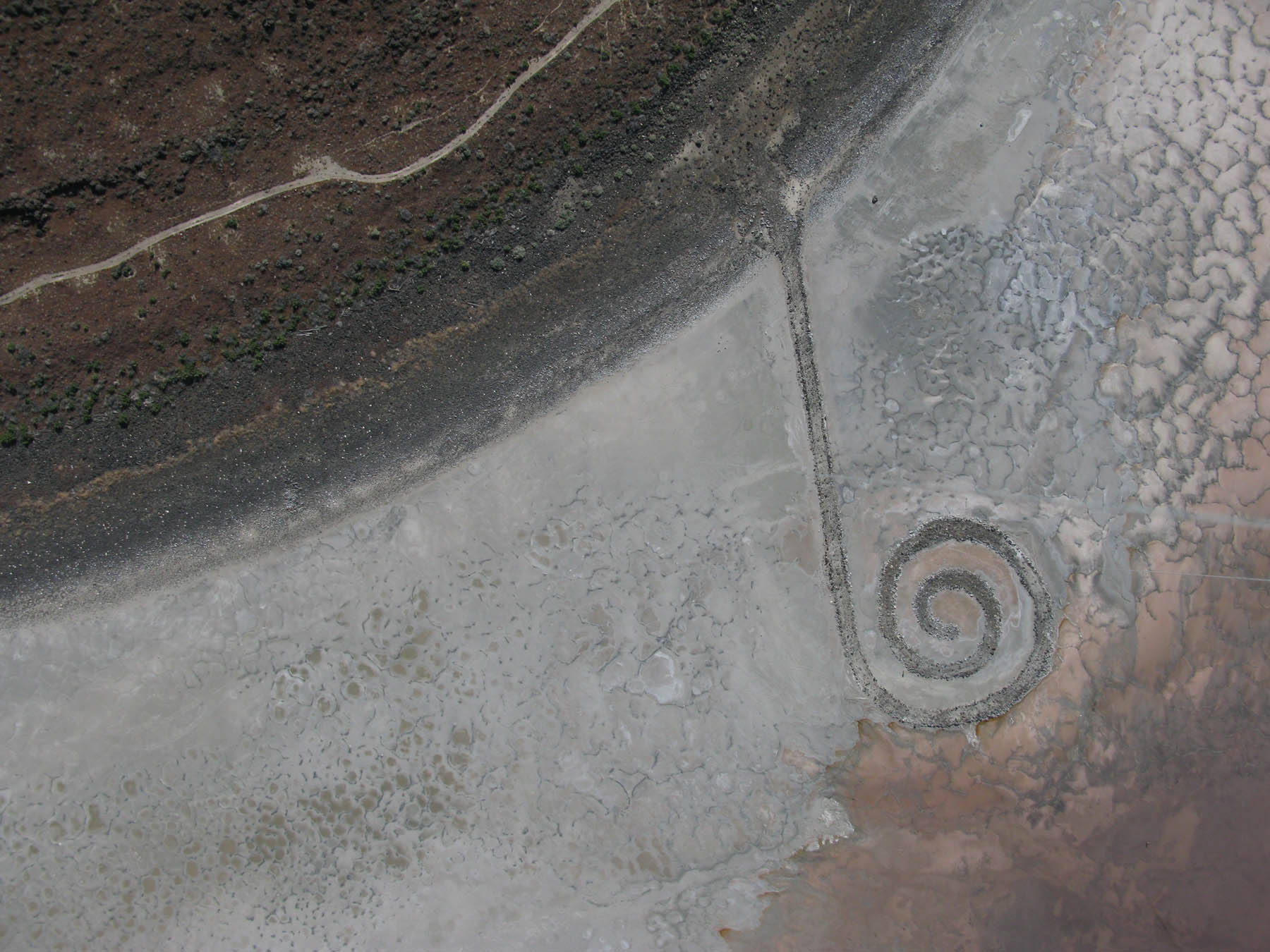
Robert Smithson, "Spiral Jetty," 1970. Long-term installation in Rozel Point, Box Elder County, Utah. Photo: Eppich/Esmay/Tang, J. Paul Getty Trust. Collection Dia Art Foundation.
RM: Detailed documentation of an artwork’s history is an essential aspect of its conservation. What kind of documentation and recordkeeping do you keep for Spiral Jetty?
FE: In terms of a conservation file, let’s just say that it is growing by the day! I joined Dia’s staff as their first conservator in the Fall of 2006, so my focus is tuned to the entire collection, including Spiral Jetty. The test drilling permit application brought a lot of attention to areas of sensitivities with the Jetty: the view shed, and the silence and sense of isolation at the site and in the 20 mile approach to the site. Dia is now very focused on working to preserve these experiential aspects of visiting the Jetty. We are forming relationships with partners in Utah, including state officials, Friends of the Great Salt Lake, the Fine Arts Museum of Utah, and The National Trust for Historic Preservation, among others, on a long-term plan for the protection of Spiral Jetty. At present, advocacy for preservation of the context surrounding Spiral Jetty is a major priority for Dia.

Robert Smithson, "Spiral Jetty," 1970. Long-term installation in Rozel Point, Box Elder County, Utah. Photo: Eppich/Esmay/Tang, J. Paul Getty Trust. Collection Dia Art Foundation.
RM: I’ve been thinking about ways the general public can help conservators document the condition of artworks, especially those outdoors. What do you think of the utility of user-generated content mined from popular sites such as Wikipedia, Flickr, and YouTube? For example, I found the following:
A Wikipedia article, a Flickr group, an interesting YouTube video (presumably a bootleg excerpt from the Smithson documentary), and a homemade YouTube video from this July by an anonymous visitor providing historical information in the middle of the sculpture.
FE: I think all of these things are helpful as documents of the artwork, although I must admit that I find a lot of the images on the web to have limited specific application since many are not dated. Also, the changing water level obscures and then subsequently reveals the Spiral Jetty, and therefore it is rarely possible to scale those images or to take any direct reference to location of basalt rocks or the silt deposits, for example. That is what prompted me to investigate methods to take aerial photographs of the Spiral Jetty on an annual basis, creating a more formalized (and measurable) framework of documents for the piece.
Trying to imagine the trend of visitors posting images on the web however, I could imagine that still and moving images taken at the site might become so ubiquitous that it could provide the ability to monitor the day-to-day goings-on and condition of the Spiral Jetty. It is our understanding that visitors come to the site every single day. If all of them posted images, we would accumulate quite a record, albeit one that is less formalized.
RM: And finally, can you tell me about the idea of authenticity and how it plays into the preservation and representation of this work?
FE: For conservators, when we consider intervention and treatment on a work of art, we often think about preserving “original materials” and strive to align any intervention with the “artist’s intent.” In the case of Spiral Jetty, both of these issues are not straightforward since the original materials of the object arguably began changing the very instant the artwork was completed. Therefore, citing an original condition to use as a benchmark for a restoration effort is very challenging, if not impossible. Defining artist’s intent is also daunting in this case, since Smithson is no longer here to provide guidance (he died tragically when the Spiral Jetty was less than three years old).
As Spiral Jetty nears its fortieth birthday, I think it is important to continue to raise the public’s awareness about areas of sensitivity for this, and other works of art in the landscape. I am thrilled to have the opportunity to work with colleagues at Dia in efforts to preserve this artwork and its site.
Read more about the latest threats to Spiral Jetty today on Modern Art Notes.
UPDATE, November 18, 2009: Randy Kennedy from the New York Times recently published a piece that covers similar issues with the conservation of Spiral Jetty. The Getty also has additional coverage, including an image gallery of the aerial photography, a 360-degree view from the coils of Spiral Jetty, and a time-lapse video of sunrise at the site.
Richard McCoy is Assistant Conservator of Objects at the Indianapolis Museum of Art, where he conserves artworks across all areas of the collection. McCoy’s research extends beyond the technology and structure of artworks to include artistic intent and execution as it relates to the preservation of contemporary art.




Pingback: The Digest. 07.22.09. at C-MONSTER.net
Pingback: Isabelle Vodjdani (isavodj) 's status on Wednesday, 18-Nov-09 17:37:26 UTC - Identi.ca
Pingback: Conservators talk Spiral Jetty | Tyler Green: Modern Art Notes | ARTINFO.com
Pingback: The Top Ten U.S. Online Contemporary Conservation Projects from 2011 | Art21 Blog
Pingback: Robert Smithson | amandeepmudhar
Pingback: 5 ft dia. Professional Weather Balloon, 150g (Red) Reviews · AUTIMOBILE